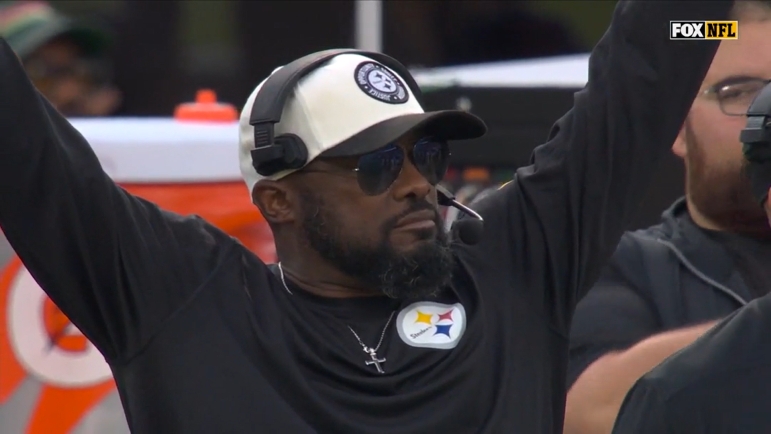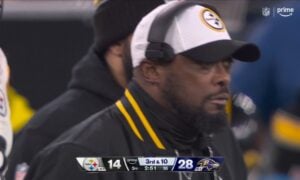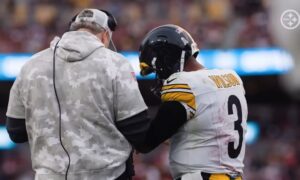Over the weekend, we answered a reader-submitted podcast question to outline Mike Tomlin’s biggest blunders of his long coaching career. As I wrote in that article, I’d look at the other side of things later this week. Today, we’re reviewing Tomlin’s best choices and decisions in his 17 years (and counting) as the Pittsburgh Steelers head coach.
The same criteria apply to his best as they did to his worst. To the best of our knowledge and ability, we’ll focus on individual decisions that were clearly Tomlin’s and not broadly made by the organization. For the most part, that will exclude all the great draft picks made over that span. In most cases, it won’t include trends or seasonal outcomes like the team winning a Super Bowl or persevering through a Ben Roethlisberger-less 2019 season. While those are obviously positives for Tomlin, we wanted to get as specific and narrow as possible.
With that, his best decisions. These are ranked but I’m not putting them in any particular “best of the best” order. So pay no mind to that.
1. Retaining Dick LeBeau/Core Defensive Coaching Staff When Hired (2007)
Maybe the best thing Mike Tomlin did was the first thing Mike Tomlin did. A surprise choice to succeed Bill Cowher, the first question after Tomlin’s hire was if he’d keep the core of the defensive coaching staff intact. After all, Tomlin was a Tony Dungy Tampa 2 guy hired by a team running Dick LeBeau’s Fire Zone. Could it be any more different?
At his opening press conference, Tomlin made it clear he had no plans to get rid of LeBeau. Others, such as DB coach Ray Horton and DL coach John Mitchell, were also retained. A 2007 Columbus Dispatch article quoted SS Troy Polamalu and Tomlin about not fixing what wasn’t broken.
“I think he (Tomlin) has so much respect for coach LeBeau, rightly so, that he just said, ‘Hey, do what you do best,’ ” Polamalu said.
Tomlin confirmed that.
“We have players here that have been acquired to fit that scheme, and what they do, they do well,” Tomlin said. “That’s coaching to me, putting your players in a position to do well. It’s no question that we have people that have continuity with the scheme. … I have a lot of respect for coach LeBeau.”
Tomlin had to compromise his schematic upbringing, but it was the right choice for a defense that could stay the course with its personnel. By 2008, they were an elite group that won a Super Bowl.
2. Preaching/Repping Blocking Off Turnovers Ahead Of Cardinals Super Bowl (2008)
We’ve mentioned this one before but it’s definitely one worth repeating. As told in the NFL Films documentary after the Steelers’ Super Bowl win over the Arizona Cardinals, it was a Tomlin practice point that made James Harrison’s 100-yard pick-six possible.
Going through the week, Tomlin noticed the Steelers’ defense would slow up after turnovers. He instructed them to finish the play and block for whoever picked off the pass. That advice proved important as the defense created a convoy for Harrison on his run from end zone to end zone. Those are the details that put teams over the top to hoist Lombardi’s.
3. Going For Touchdown In Road Win Against Chargers (2015)
Thinking about specific in-game decisions, Tomlin made a gutsy call to play for the win in 2015 against the San Diego Chargers. With Mike Vick as his quarterback, the Steelers trailed 20-17 with seconds to go. On the 1-yard line, Tomlin could’ve settled for three and sent the game to overtime. He opted to have a winner decided in regulation, a Wildcat snap to Le’Veon Bell, who squeaked over the goal line for the game-winning score.
Pittsburgh won 24-20. Despite starting Vick and Landry Jones throughout parts of the season, Pittsburgh finished 10-6 and made the playoffs, beating the Cincinnati Bengals in the Wild Card game.
4. Handling Antonio Brown
No, it wasn’t perfect. But Mike Tomlin handled a personality like Antonio Brown better than any other head coach could’ve been expected to. Brown eventually forced his way out of town in a deal that proved excellent for the Steelers (their trades of Brown, Bryant, and Claypool were all awesome but collective decisions, so they won’t appear here). Still, Tomlin steadied the ship longer than imaginable.
I am stretching the definition of this article a bit. Tomlin’s ability here was over a long period of time as opposed to a singular decision, but because it was so obviously a credit to Tomlin, I’ll include it here. It allowed Brown and the Steelers to be one of the most potent offenses during the mid-2010s.
5. Hiring Todd Haley, Extending Ben Roethlisberger’s Career (2012)
In a vacuum, hiring Todd Haley isn’t the greatest coordinator selection in NFL history. However, it was key to recognizing the need to extend Ben Roethlisberger’s career. He changed his playing style to play from the pocket instead of scrambling around, getting the ball out quicker while taking less abuse, which would’ve shortened his career.
Credit is clearly distributed to Haley and Roethlisberger for this, but Tomlin found the right guy to change his quarterback’s style. Having that foresight and plan was the critical first step. As far as offensive coordinator hires have gone, this is a good one by Tomlin. There have been far worse.
6. Assembling Strong Secondary-Minded Coaching Staff (Teryl Austin, Grady Brown) To Counter Offensive World
Mike Tomlin has plenty of control over the Steelers defense, but he’s humble enough to load up a smart defensive coaching staff with plenty of secondary insights. DC Teryl Austin has a defensive back background, while DBs Coach Grady Brown was a strong hire as a relative college unknown (his ties to Austin also helped bring him in).
In a world where passing games are king, I like Tomlin building this approach. That focus helped the team survive injuries, like losing so many safeties last season but remaining competitive. Or developing game plans to slow down Rob Gronkowski in 2011 with CB Cortez Allen or shutting out Rams’ WR Cooper Kupp in 2019 (a fact that even surprised Tomlin).
This is broader than just one decision, but the philosophy and specific hires have been big in keeping the Steelers’ defense stout for most of Tomlin’s tenure.
7. Making Le’Veon Bell Drop Weight (2012-2013)
Coming out of Michigan State, RB Le’Veon Bell was a hefty boy. Weighing in around 240-245 pounds wouldn’t allow him to be an explosive runner or the receiver he’d eventually become. Heading into his second year, Mike Tomlin mandated Bell shed pounds and get into the 220-pound range.
It was the best thing for his career. Bell made a big jump from his first to second year, showing the shiftiness and quick-cut ability that made him an elite runner. He emerged as a receiver, grabbing 83 passes in 2014 to finish second on the team in receptions. His 854 yards did the same.
While Bell isn’t the first back to cut weight, he credited Tomlin specifically for pushing him to get lighter. Without that, Bell might’ve still been a good back but not the elite-level player he became—at least until he left for the New York Jets, where coaching and misusage made it clear how good Tomlin and Pittsburgh were for Bell.








